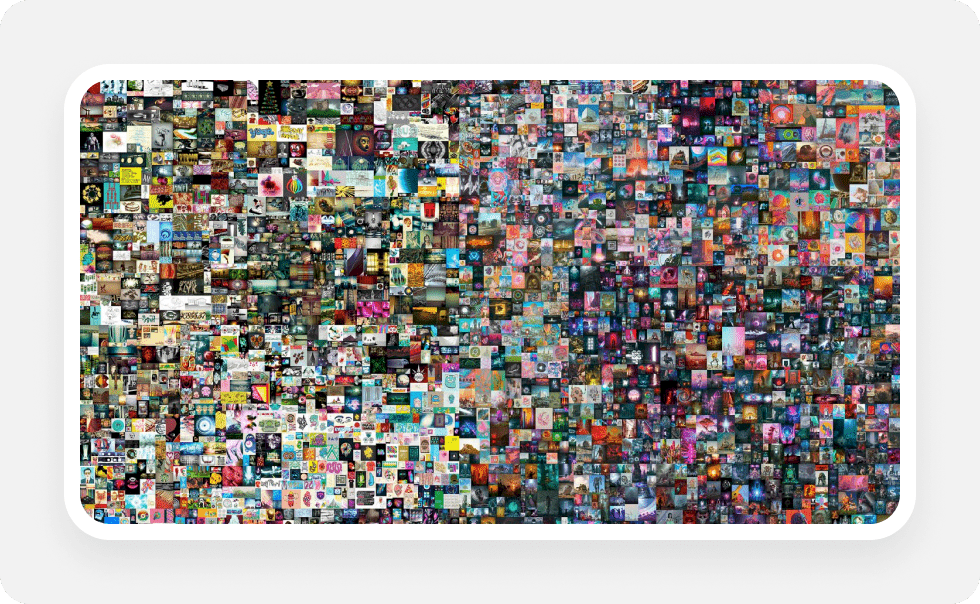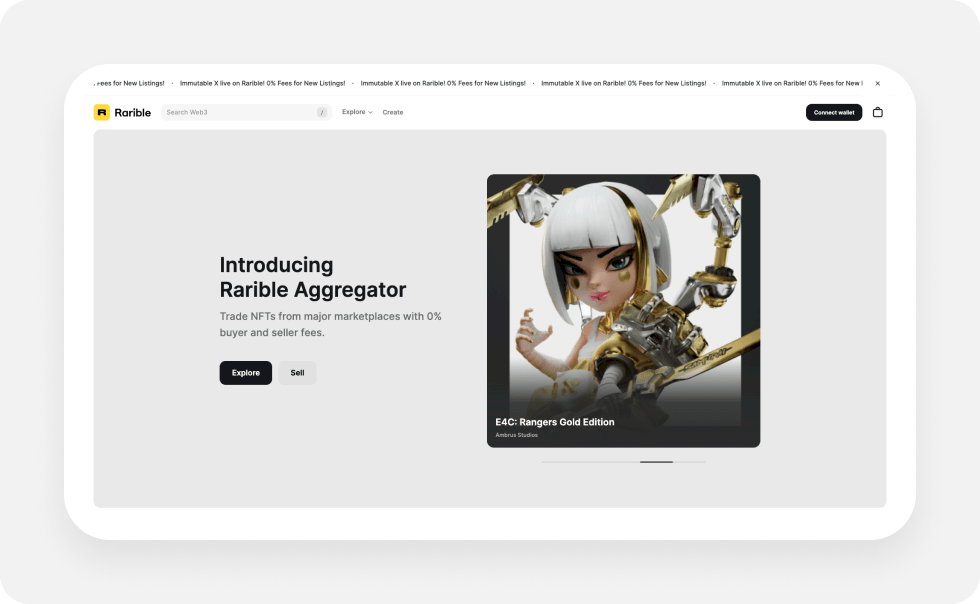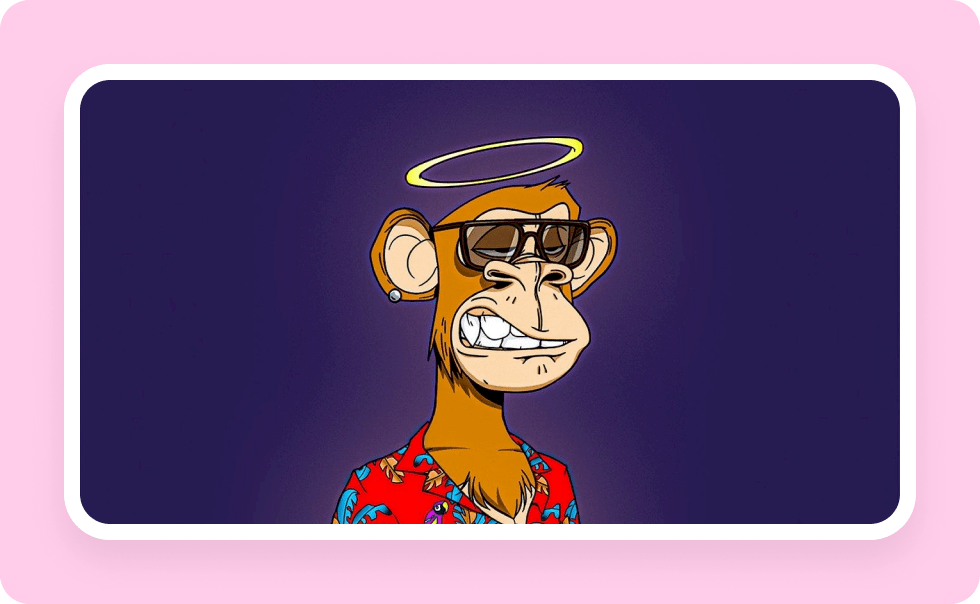The meteoric rise of cryptocurrencies in the past decade has given birth to a new asset class called non-fungible tokens, or NFTs. These digital assets have made headlines over and over, as they've been used to purchase everything from virtual real estate and art to in-game items and even tweets. Sometimes for millions of dollars.
The hype train has left the station, and there's no turning back. NFTs are here to stay, leaving many wondering how they can get a piece of the action. In this article, we'll explain what NFTs are, how they work, and some of their most popular use cases. We'll also show you how to mint your own NFTs using SiteManager.
What are NFTs?
Let's start with the basics. As the name implies, non-fungible tokens are a type of cryptocurrency representing a non-fungible asset. Fungibility is the property of an asset whereby each unit is indistinguishable from any other unit. For example, one Bitcoin is interchangeable with any other Bitcoin.
However, NFTs are not interchangeable because they represent unique items. These could be digital or even physical assets such as art, real estate, tickets, collectibles, etc. This is why NFTs are often referred to as "crypto collectibles".
What makes NFTs possible?
The uniqueness of each NFT is guaranteed by the fact that they are stored on a blockchain. What's a blockchain? In short, it's a digital ledger that records all transactions made with cryptocurrencies. This ledger is distributed across a network of computers, making it virtually impossible to tamper with.
The most popular blockchain for NFTs is Ethereum because it was one of the first to support a feature called smart contracts. Smart contracts are bits of code that can automatically execute transactions when certain conditions are met. For example, we can use a smart contract to automatically transfer ownership of an NFT when someone buys it.

Use cases for NFTs
Now that we got the technical stuff out of the way, it's time for the fun part: exploring the many use cases for NFTs. Here are some of the most popular ways people are using them today.
Art and Collectibles
NFTs have turned the art world upside down by giving artists a new way to sell their work. We've all heard of people selling digital art for millions of dollars, but NFTs can also be used to sell physical artwork.
The best part is that artists can now directly sell their work to collectors without going through an intermediary. This gives them complete control over the prices and terms of sale. NFTs have also given rise to a new type of artist: the crypto artist.
These artists create art specifically for sale as NFTs. The most famous example is probably Beeple, who sold an NFT collage for $69 million last year. Another benefit of NFT art is fractional ownership. This means that a collector can own a part of an NFT, even if they can't afford the entire piece.
Of course, it's not just art that can be sold as an NFT. Collectibles such as trading cards, sneakers, wine and even tweets have all been tokenized in recent months. NBA Top Shot, a platform for buying and selling digital versions of basketball highlights, is one of the most popular examples.
In-game items
The gaming industry makes more money yearly than the movie and music industries combined, so it's no surprise that NFTs are also being used here. The most popular games for buying and selling NFTs are probably Decentraland, CryptoKitties, Axie Infinity and Gods Unchained.
One of the most interesting things about NFTs in gaming is that they can be used to create truly unique experiences. For example, Decentraland is a virtual world where players can own land and build whatever they want. The only limit is their imagination (and their budget).
In the case of Axie Infinity, this new type of game is called play-to-earn. In short, players can earn cryptocurrency by playing the game. Instead of grinding for hours with nothing to show, they can now own tangible assets with real value. These can be resold on secondary markets or used in other games.
Identity and ownership
In the physical world, we use driver's licenses and birth certificates to prove our identity. But what about the digital world? NFTs can be used to create digital IDs stored on a blockchain. This makes them tamper-proof and much more secure than traditional methods.
But NFTs also translate to the 'real' world. For example, event tickets could be tokenized to prevent scalping and fraud. The same goes for loyalty points, memberships and even votes. NFTs can also be used to prove ownership of assets such as property, vehicles and land. This is especially useful in countries with poorly developed land registries.
Supply chain
NFTs can be used to track items as they move through the supply chain. Every time an item changes hands, the new owner can update the NFT with their information. This creates a complete record of an item's journey, from manufacture to sale.
This feature is useful for luxury goods, where authenticity is important. It's also helpful for tracking the provenance of food and other perishables.
TBA
With the emergence of the Metaverse, decentralized autonomous organizations (DAO,) and non-fungible tokens (NFTs,) a new world is being created that runs on blockchain technology. This world is known as Web 3.0.
Web 3.0 is the next evolution of the internet, where users are in control of their data and own their digital identities. The possibilities of Web 3.0 are endless. But one thing is for sure: it will change how we live, work and play.
Popular NFT projects
We've already covered a few popular NFT projects, but countless more are worth mentioning. Here are a few of the most popular NFT platforms and applications:
The Bored Ape Yacht Club (BAYC)
What if there was a club so exclusive that you would need hundreds of thousands of dollars just to get in? That's the Bored Ape Yacht Club. The BAYC is a virtual club for the ultra-rich. Membership is acquired through the purchase of an NFT, which can be resold on the open market.
The BAYC is more than just a club; it's a social experiment. Celebrities like Stephen Curry, Paris Hilton, Jimmy Fallon, and even Madonna have been known to drop by.
CryptoPunks
CryptoPunks is one of the first NFT projects that made waves in the crypto community. It was launched in June 2017 and allowed users to purchase, trade, and collect digital art. Each CryptoPunk is a one-of-a-kind, 10x10 pixel image stored on the Ethereum blockchain. There are a total of 10,000 CryptoPunks, and each one is unique.
The idea behind CryptoPunks was to experiment with the concept of digital scarcity. The project was created by Larva Labs, a team of artists and engineers. Since its launch, CryptoPunks has become one of the most popular NFT projects. In February 2022, CryptoPunk #5822 sold for a staggering $24 million.
The Sandbox
The Sandbox is a user-generated content platform that allows users to create, share, and monetize their gaming experiences. The platform uses NFTs to represent game assets, which can be purchased, traded, or sold on the open market. Think of it as the crypto version of Minecraft.
The Sandbox has its own token, SAND, which is used to purchase in-game assets. Since its inception, it has become a prominent coin on platforms like Coinbase. And with endorsements from the likes of Snoop Dogg, The Sandbox is quickly becoming one of the most popular NFT projects in the world.

What is NFT minting?
Minting is the process of creating an NFT. As mentioned above, this process requires using a smart contract, a piece of code that runs on the blockchain. The contract defines the rules and conditions under which the NFT can be created, transferred, and destroyed. Although you initially needed to code your own smart contract to mint an NFT, there are now platforms that allow you to do this without any coding experience.
One such example is SiteManager. SiteManager is a no-code platform that allows you to launch your NFT collection website in minutes. All you need is a domain name and an Ethereum wallet. SiteManager will take care of the rest.
Where to buy NFTs
If you're interested in purchasing an NFT, there are a few things you need to know. First, multiple blockchains now support NFTs, so you'll need to choose the one right for you. The most popular choice is Ethereum, but others include Polygon, Solana, and Flow.
Once you've selected a blockchain, you'll need to find an exchange that supports NFTs. The most popular NFT exchange is OpenSea, but others are worth considering, such as Rarible and NiftyGateway.
Once you've found an exchange, you can start browsing through the available NFTs. Each exchange has its own selection of NFTs, so it's worth checking out multiple exchanges before making a purchase. Buying is as simple as selecting the NFT you want and paying with the cryptocurrency of your choice.
How to store NFTs
Once you've purchased an NFT, you'll need to store it in a wallet. NFT wallets are different from regular cryptocurrency wallets in that they support the storage of non-fungible assets. There are a number of NFT wallets to choose from, but the most popular is MetaMask. Newer options like Enjin are also worth considering.
Once you've selected a wallet, you'll need to add it to your browser or mobile device. After that, you can start storing your NFTs. Most wallets will allow you to store multiple NFTs, so you can easily keep track of your collection.
How to sell your NFTs
Finally, selling your NFT is a relatively simple process. If you're selling on an exchange like OpenSea, all you need to do is list your NFT for sale and set the price. Once someone buys it, the NFT will be transferred to their wallet, and the cryptocurrency will be deposited into your account. Auction-based selling is the most common type of sale, but some exchanges also support instant sales.






